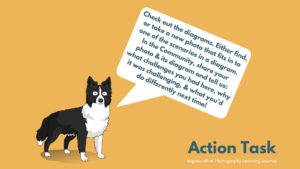The job of the photographer centres around LIGHT.
Whether you love using off-camera flash, studio lighting, or natural light, the way we light our subjects is fundamental to how our photos look.
And yet, when we begin photography, we seem to have a belief that the more light the better! I think this stems from having kit lenses with relatively narrow maximum apertures, limiting the kinds of conditions we can take photos in!
That being said… more light is in fact not always better.
In fact, it’s often worse.
If it your job as a pet photographer to understand:
- the different qualities of light, how harsh or soft they are and what effect this has on your photo, as well as light temperature
- how to use the direction of light to your advantage.
Light is so incredibly important to what we do, not only so we can see our subject, but also because:
- it can set the mood of the photo
- it can guide the viewer through and around our photo, or help them to quickly leave it.
Before you begin these lessons, take a moment to be a light detective.
You don’t have to go far. Begin wherever you are right now. Ask yourself:
- Where is the light coming from?
- Is it soft or harsh? (don’t worry if you aren’t sure what this means. Go with your gut)
- what colour/temperature is it?
Now, assuming it’s not the middle of the night when you’re reading this, head outside, onto the footpath, or garden, or whatever is just outside your door.
As yourself the same questions:
- Where is the light coming from?
- Is it soft or harsh?
- what colour/temperature is it?
See if you can find another interesting little location. Maybe under a tree or beside a wall, or go for a little walk down the street. Somewhere that the light is going to be different in some way. Again:
- Where is the light coming from?
- Is it soft or harsh?
- what colour/temperature is it?
The thing is, the more sensitive we become to subtle changes in light, the better we can choose locations, choose where our dog is looking, choose how to set up the photo so they get nice bright catchlights in their eyes and keep detail on their face.
Our eyes are pretty crap at sensing the difference between light and low light. Just walk into any very shaded forest path with high density canopy overhead, and your eyes will be like: 🤷🏻♀️ “seems pretty light to me!!”
Meanwhile your camera is like not to panic anyone but we’re gonna need ISO 4000 in here.
Learn to see these subtle shifts of light. Go into your dark forest path and notice where the soft ambient light is coming from (hint: probably the edge of that very dark area!).
The more you can see these shifts in light… the more you can use them. Train your eyes. Whenever you’re out walking your dog, be looking for the light. I don’t mean the sun. I mean the light.












